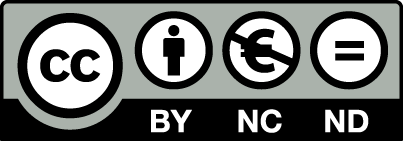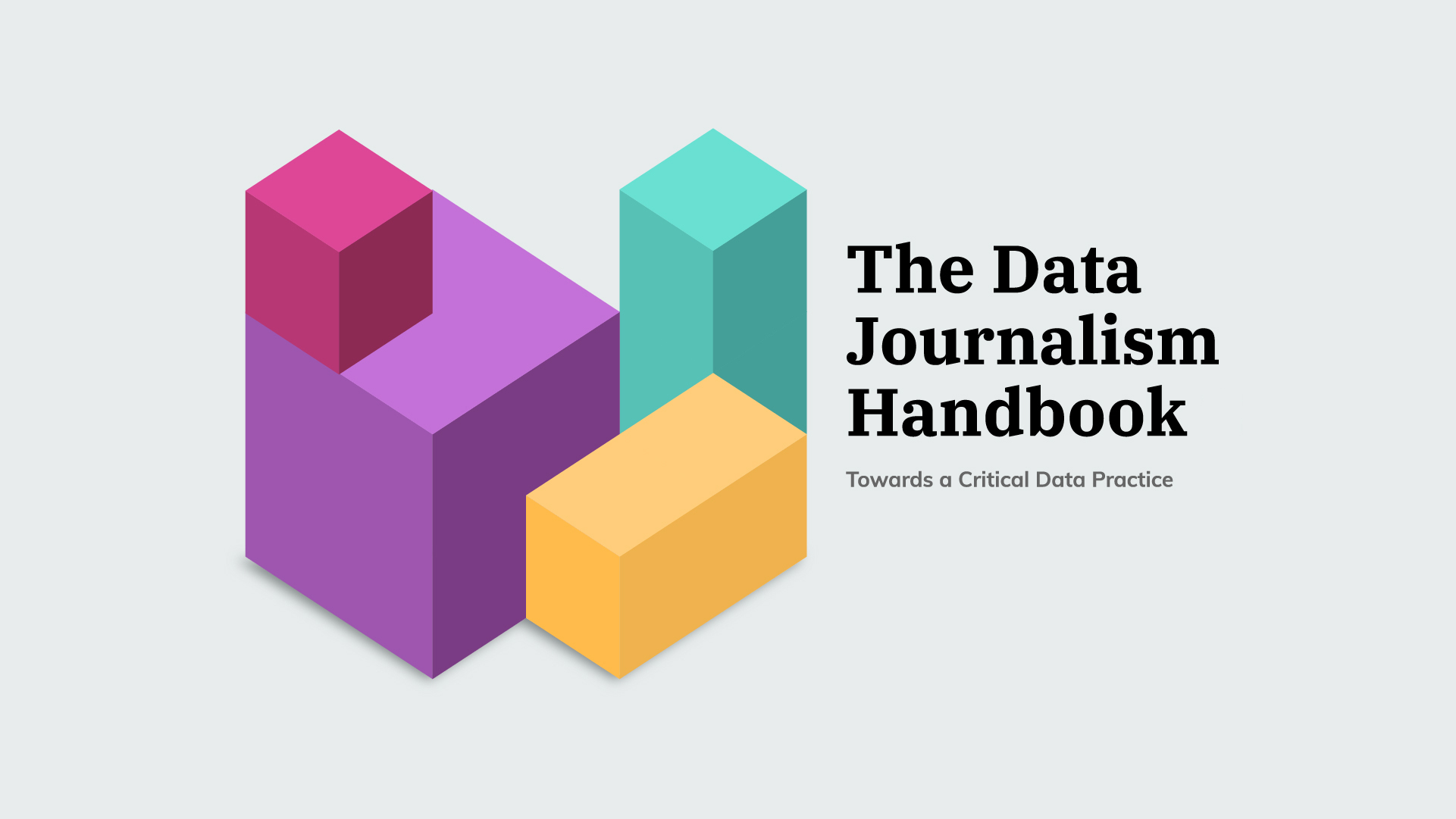The Greek edition of the collective volume “The Data Journalism Handbook: Towards a Critical Data Practice” is now available by iMEdD Lab at datahandbook.lab.imedd.org.
Preface to the Greek Edition
When as a journalist you start working with data, at the initial learning stage already, the new world revealed to you is overwhelming –that is, both impressive and calamitous: you are stunned by the investigative potential available and at the same time you are inundated amidst a frantic effort to acquire the right skills so that this potential can become your potential. In the beginning, the “errors” are always plenty; way more than the small successes soon to come on your computer screen. You are eagerly taking in every word of other people, those more experienced in the field, expecting that they will explain to you, step by step, how exactly one thing will be solved or another will function. Then, when bewilderment becomes your fundamental state, those other people will often tell you, with the serenity characteristic of those who know exactly what they are doing, which increases the confusion of those who have no idea whatsoever about where they are going, that “you will figure it out, it’s no big deal”.
It will take time, and perhaps only when you have already acquired some of the technical skills required for data journalism, you will be able to realize that those people were right and that, indeed, you do not need a guidebook in advance for each individual task that you will potentially perform or for every tool you will use. Today, more than six decades after the early uses of data and computational methods in journalism and after more than 12 years of international growth and development of computational and data journalism (Houston, 2021)1, the plethora of courses, workshops, tutorials and online forums available to fill any technical “gap”, make clear that the most important qualification of a data journalist is to be willing to learn and accustomed to learning –constantly.
Along with the spread of techniques, tools and good practices, today, that we still talk about a “new genre of journalism”, what the community probably needs the most is an international, empirical and in-depth dialogue on important issues of the field: is this “new genre” really new? In fact, could this still existing notion of a “genre” of journalism, overly constrain a specialization whose role is none other than the very pursuit of journalism in our digital era? Does data journalism in daily practice keep in mind that its primary purpose is research, or does it embrace contemporary graphic design to such an extent, in such ways and at such speeds that it ultimately maintains an immature distinction from journalism in general (or, if you like, “traditional” journalism)? In any case, what does interdisciplinarity, openness and accountability in data journalism mean in practice? And how can it find its way in countries where the media industry, by comparison, lacks resources, innovation, training and access to data?
These are only a few of the questions raised and issues discussed in this project, The Data Journalism Handbook: Towards a Critical Data Practice. This collective volume2 (editors of the original work Liliana Bounegru and Jonathan Gray call it a “collective experiment”3) consists of eight thematic sections and includes a total of 55 chapters, written by leading journalists, professionals and researchers from all corners of the globe. The Handbook is a handbook of ideas, opinions, practices and concerns: it initiates precisely this kind of international dialogue, enlightening and inviting those who practice data journalism, those who teach it, those who learn it, those who wish to get to know it, and those who are agents of collaboration or synergy to reflect upon it.
For data journalists –and beyond
Those journalists who are not familiar with data gathering, processing, analysis and visualization will be introduced to ways of practicing data journalism across the world –from the US to Turkey, from Cuba and Argentina to India and China, from Germany to Pakistan, from the UK to Kenya, among others. The accounts of journalists on how to select topics, organize working groups, retrieve, control and use the data, constitute a toolkit that is useful for further research and study for those who would like to get to know the field and plan their own first steps.
By reading these accounts, practitioners of data journalism will “converse” with colleagues, identify with situations and draw inspiration from others. For example, when Caelainn Barr writes about knife crime in the United Kingdom4, she notes that, in the absence of official public data, “in the current year we needed to begin counting the deaths as they happened […] We decided to keep track of the information ourselves, through police reports, news clippings, Google Alerts, Facebook and Twitter”. For us at the iMEdD Lab, it was only natural to identify with this case –for months, the tracing of COVID-19 deaths in Greece by geographical area, the compilation and maintenance of our relevant dataset was based on nothing other than our own Press clipping5. In another case, reading the chapter by Flor Coelho about the crowdsourcing initiatives of La Nación and learning that retirees, students and other groups of citizens in Argentina “volunteered” to collect data from thousands of .pdf documents (relating to research on public interest issues such as Senate expenses), we found ourselves smiling sincerely: it had not occurred to us to organize something similar in regards to our ongoing research on auctioned properties in Greece, but it could be an idea potentially useful by any group that is involved with data, as long as information on any topic of public interest remains available but still contained, scattered and unstructured –in other words, essentially inaccessible.
The publication is also a source of self-criticism and partly a revision of attitudes for data journalists: it reminds us that it is not an end in itself, to get caught up in a technical skills decathlon, since “we’re here to break news and tell stories –not to flex our […] muscles”, as Winny de Jong writes6. It makes us rethink the inter-industry “whining” in regards to the absence of complete, machine-readable datasets provided by the governmental institutions and agencies, as we often complain that “we do what the State should do, when our work should start with the analysis” –something that, quite honestly, we have all found ourselves stating, in one way or another. To what extent is this really the case? The state must be accountable, transparent, respectful and to safeguard the citizens’ right of access to information. But when it does not, data journalism is worth remembering the “activist” dimension of its being, which has always existed and involved the discovery, organization and distribution of open data –ultimately making the state accountable for what it does not tell us when it should. That is to say, in this –unfortunate for our democracy– case, data journalism does nothing but what is the quintessence of journalism as a whole: it liberates information and exerts control over power, for the common good. Again, these are only a few of the thoughts that the book generates in practicing data journalists.
But even journalists who do not –they think– use data in their work, reporters who specialize in technology, and even political or financial journalists will discover the algorithm beat7: the need, which is already a journalistic specialization, not only to use machine learning in the context of journalistic research, but also to report and conduct research on the effects of algorithmic decisions in private and collective life, from so-called “profiling” of people in governance systems to assessing our creditworthiness –journalists are now doing enough reporting with data, but still not enough reporting on data, as was mentioned in an interesting discussion on the subject.
For the media that have (not) invested in data journalism
At the same time, the Handbook can be a stimulus for the so-called “market” in general. For example, Eddy Borges-Rey8 refers to ads for jobs such as Machine Learning Journalist or Automation Editor. Sarah Cohen summarizes remarkably the many and varied specializations under the umbrella of data journalism, writing that “what was once a garage band has now grown big enough to make up an orchestra”9. With another musical reference (an interesting coincidence), Simon Rogers, while appraising a decade of work in data journalism in his paper, published in 2012, entitled Data Journalism is the New Punk, makes this point: “We were at a place where creativity could really run free. But also, where the work would eventually become mainstream”10. Market players, those who regulate the production process in a newsroom and those who draw up media organization charts may well be interested in these and other chapters. If they operate in markets where data journalism is an integral part of established media, they can reflect on what Nikki Usher says, that “data journalism, at best, has gotten boring and overly professional, and, at worst, has become another strategy to generate digital revenue”11. Those who do not yet encounter such thought-provoking problems, because they operate in markets for which data journalism remains an unfamiliar or awkward luxury for various reasons, are challenged to conduct their own self-reflection and consider exactly that; that the problem Usher poses, does not concern them, for their own journalistic and publishing scene.
For the academic and wider research community
Teachers of tomorrow’s journalists may find the publication of particular interest to them, especially if they are still in search of their own pacing in terms of the individual subjects of teaching data journalism, the teaching method, the people they can outreach to in educating their students, and the ways in which the collaboration between academia and industry can potentially be mutually constructive, overcoming their “historically […] rather uneasy relationship”, as quoted by Damian Radcliffe and Seth C. Lewis12.
Statisticians, data scientists, computing professionals, civic technologists (and “computer nerds” in general, in the most positive sense of the word, in the same way that they would honorarily call the journalists “scribes”) can learn how much they have “lent” to data journalism, how much it needs them, as they are an integral part of it, and how the intertwining of their disciplines and journalism has already been achieved internationally.
For journalism as a whole
In any case, the critical thinking, regarding data journalism, presented in this Handbook concerns journalism in general. For example, Sam Leon notes that “with the rise of data journalism, ideas around what can be considered a journalistic source are changing”; highlights the challenge of journalistic accountability regarding the methods used; and refers to the need for both the reproducibility of journalistic work and the peer review13 already in place (here is a characteristic legacy from the academic and scientific world). Natalia Mazotte, who analyses the question of openness in data journalism, notes that, unlike the well-known journalistic confidentiality which “means ensuring the security of the source”, “when information is abundant, not sharing the how-we-got-there may deprive the reader of the means to understand and make sense of a story”14. C. W. Anderson brings up the necessary assumption of provisionality and uncertainty, versus confidence or even arrogance, on behalf of (data) journalists and notes that “if done correctly, this could make journalism more like modern science, rather than less”15. And Nikki Usher critically suggests that “data journalism needs to go back to its roots of change and revolution […] of a self-determined vision of renegades running through a tired and uninspired industry” and that data journalists must “hack the newsroom as they once promised to do”16.
If all this, and much more included in this collective volume, encapsulates a critical view of data journalism, namely the power of revitalizing the profession, who could, after all, say that journalism as a whole is not interested?
Therefore, for all those who are interested, we at iMEdD decided to undertake the project of translating and producing the Greek edition of this volume, in the belief that it is worth being offered to the community and becoming part of the Greek literature on the present or future of data journalism. After all, sometimes it is important that someone speaks your language –which, we must not forget, also means that you share common backgrounds, concerns and aspirations.
1. See also C. W. Anderson’s chapter in this volume: Chapter 9.1, “Genealogies of Data Journalism”.
2. It was originally released by Amsterdam University Press in March 2021 and is also available in English at datajournalism.com, published by the European Journalism Center and the Google News Initiative.
3. See the introduction of the English edition: Chapter 2.1, “Introduction”.
4. Chapter 3.1, “Building Your Own Data Set: Documenting Knife Crime in the United Kingdom”
5. As part of the iMEdD Lab work on the course of the pandemic in Greece and the world. As of the time of writing, in February 2022, the authorities have not officially announced the geographical distribution of COVID-19 deaths in the country.
6. Chapter 5.8, “Data Journalism Should Focus on People and Stories”
7. Among other things, see Chapter 6.1, “The Algorithms Beat: Angles and Methods for Investigation”, by Nicholas Diakopoulos and Chapter 6.5, “Algorithms in the Spotlight: Collaborative Investigations at Der Spiegel” by Christina Elmer
8. Chapter 4.8, “Journalism With Machines? From Computational Thinking to Distributed Cognition”
9. Chapter 5.1, “Ways of Doing Data Journalism”
10. Chapter 7.3, “From The Guardian to Google News Lab: A Decade of Working in Data Journalism”
11. Chapter 9.6, “What Is Data Journalism For? Cash, Clicks, and Cut and Trys”
12. Chapter 8.2, “The Datafication of Journalism: Strategies for Data-Driven Storytelling and Industry-Academy Collaboration”
13. Chapter 4.5, “Accounting for Methods: Spreadsheets, Scripts and Programming Notebooks”
14. Chapter 4.6, “Working Openly in Data Journalism”
15. Chapter 9.1, “Genealogies of Data Journalism”
16. Chapter 9.6, “What Is Data Journalism For? Cash, Clicks, and Cut and Trys”
Works Cited
Houston, B. (2021) “The history of data journalism: A historical take on every critical breakthrough from the 1950s until today”, datajournalism.com, December 13. Available at: https://datajournalism.com/read/longreads/the-history-of-data-journalism (Accessed: February 13, 2022).
Translation: Evita Lykou
* Kelly Kiki is a data journalist and Project Manager at iMEdD Lab, the pillar of original journalistic content production with data at its core, at the non-profit journalism organization iMEdD. She is the editor of the Greek edition of this volume, The Data Journalism Handbook: Towards a Critical Data Practice.
“The Data Journalism Handbook: Towards a Critical Data Practice” is edited by Liliana Bounegru and Jonathan Gray. It has been translated into Greek by Evita Lykou. The Greek edition of the Handbook, edited by Kelly Kiki, is produced by iMEdD. The English edition of the Handbook is produced by datajournalism.com, the European Journalism Centre, and the Google News Initiative.




